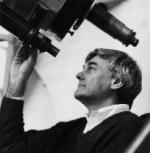Research
My main focus is near-field cosmology. This is the use of precision studies of kinematics, dynamics, stellar populations, chemical abundances, ... for the oldest systems in the local universe to deduce the fundamental properties of structure formation and the nature of dark matter in the early Universe. Current survey and 8-m telescopes are superb for this. The revolution has begun! (launched December 2013) the ESA satellite Gaia is revolutionising this field - and many others. GAIA: Composition, formation and evolution of the Galaxy (aanda.org)
The Gaia-ESO Survey is a 450+ Co-I 400+night ESO-VLT Public Spectroscopic Survey. It is the largest large-telescope high-quality stellar spectroscopic survey, complementary to Gaia. The Co-PIs are Gerry Gilmore and Sofia Randich (Arcetri/Florence). The Gaia-ESO Public Spectroscopic Survey: Motivation, implementation, GIRAFFE data processing, analysis, and final data products (aanda.org)
Gaia Science Alerts are the real-time discoveries from Gaia - see https://gaia.ac.uk
An overview of my work on the local universe is available at
https://www.cambridgephilosophicalsociety.org/events/event/professor-ger...
With Dr Gudrun Tausch-Pebody a study of scientific integrity following reactions to Eddington's 1919 test of General Relativity is at
Early in my career I discovered the Galactic Thick Disk New light on faint stars – III. Galactic structure towards the South Pole and the Galactic thick disc | Monthly Notices of the Royal Astronomical Society | Oxford Academic (oup.com)
With PhD student Koen Kuijken I provided the first modern robust determination of dark matter near the Sun mass distribution in the galactic disc – I. A technique to determine the integral surface mass density of the disc near the Sun | Monthly Notices of the Royal Astronomical Society | Oxford Academic (oup.com) mass distribution in the galactic disc – II. Determination of the surface mass density of the galactic disc near the Sun | Monthly Notices of the Royal Astronomical Society | Oxford Academic (oup.com) 1991ApJ...367L...9K (harvard.edu)
With student Roddy Ibata I discovered the Sgr dwarf galaxy, first evidence of present-day Galaxy mergers and accretion A dwarf satellite galaxy in Sagittarius | Nature
With student Pavel Kroupa I determined a robust stellar initial mass function of continuing application 1990MNRAS.244...76K (harvard.edu)
With archaeologist John Ray we dated the unique record of an early Egyptian eclipse, 10 March 601, from a Coptic inscription. Gilmore, Gerry, and John Ray. “A Fixed Point in Coptic Chronology: The Solar Eclipse of 10 March, 601.” Zeitschrift Für Papyrologie Und Epigraphik 158 (2006): 190–92. http://www.jstor.org/stable/20191169.
Selected papers
https://ukads.nottingham.ac.uk/cgi-bin/nph-abs_connect?db_key=AST&sim_qu...
at 10/2023 I have 940 publications, 72,000 citations, a h-index of 114
Career
Ph D in New Zealand, 5 years (1979-1984) at the Royal Observatory Edinburgh, since then at IoA Cambridge. Current position: Professor of Experimental Philosophy. FRS. Scientific Coordinator of Opticon, the EC Optical Infrared Coordination Committee for Astronomy (2000-2021), subsequently OPTICON-RadioNet Pilot (2021-2025); proposer and study team member, ESA Cornerstone mission Gaia; UK PI of the Gaia data processing and analysis consortium; Co-PI of the Gaia-ESO Public Spectroscopic Survey; ERC Advanced Grant holder.
Qualifications
PhD; ScD; F Inst Physics.

